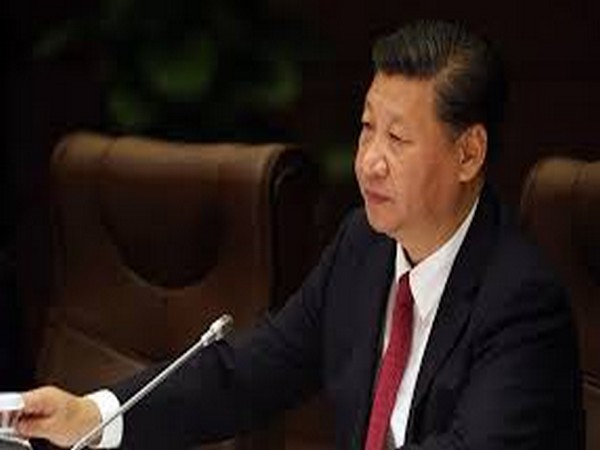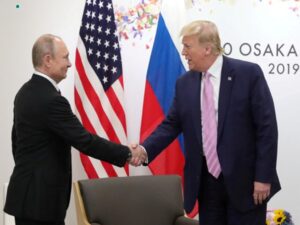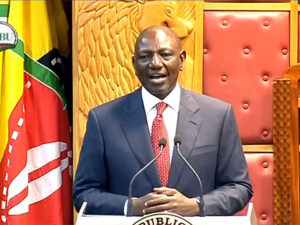
Chinese President Xi Jinping (file photo)
Beijing [China], May 30 (ANI): China is rapidly pushing ahead its agenda on the border issue with India and other long-pending disputes like Hong Kong, Taiwan and the South China Sea using the global upheaval caused by the COVID-19 pandemic, according to an analysis in the Wall Street Journal.
It has been almost four months since Xi Jinping faced the biggest challenge of his leadership–the response to COVID outbreak. But now having pulled off successfully in curbing the virus, the Chinese President has taken bold steps on issues where he has often faced international pushback and unified his ‘ChinaDream’, at a time when the United States, Latin America, and Europe is distracted by the pandemic and its economic fallout, the analysis said.
“The top leadership thinks China is relatively strong compared to the U.S. at the moment,” Shi Yinhong, a Chinese government adviser and professor of international relations at Beijing’s Renmin University, was quoted as saying. “Of course they see this as a strategic window of opportunity,” the professor added.
Xi has made establishing control of territory China claims an integral part of his agenda, and now faces mounting pressure from the public–as well as from more hawkish elements of the political elite–to make progress on those goals as the pandemic limits economic advances he also pledged, experts on Chinese politics opined.
His moves seem to be paying off for the moment, they said, but risk galvanizing international antipathy toward China , which has sharpened during the pandemic and could translate into concerted action once the crisis subsides.
The most dramatic of China ‘s moves came last week when it announced it would impose new national-security laws on Hong Kong, granting Beijing broad powers to target critics in the former British colony.
On Friday, US President Donald Trump threatened to put sanctions on Chinese and Hong Kong officials who were “directly or indirectly involved in eroding Hong Kong ‘s autonomy.”
It followed a response by the US State Department on Wednesday declaring that Hong Kong no longer has a high degree of autonomy from China, paving the way for a range of potential US measures, such as revoking the city’s trade privileges. At the opening of a yearly parliament meeting last week, China ‘s Premier Li Keqiang also flagged a more aggressive posture toward Taiwan, a self-ruled, democratic island that Beijing sees as its territory.
In reference to dealing with and assimilating the island in an annual policy speech, he dropped China ‘s usual calls for a “peaceful” approach–a departure from nearly 30 years of precedent.
Other senior leaders also renewed warnings against efforts to seek Taiwan’s independence, saying that a forceful takeover remains an option even though they prefer a peaceful solution.
In addition to this, Chinese military ships and planes have staged several drills near Taiwan this year in what the island’s defence ministry says are attempts to intimidate Taipei into making concessions on sovereignty and to distract from Beijing’s early coronavirus missteps.
China ‘s Defence Ministry has said its drills were aimed at safeguarding national sovereignty and protecting Taiwan ‘s residents from independence activists there. A long-running border dispute between China and India flared again in the past few weeks after Chinese troops moved into a contested Himalayan area close to where India has been upgrading infrastructure, prompting fistfights between the two sides.
Beijing has further upset the status quo in the South China Sea in recent weeks. It created two new administrative districts in contested areas, named 80 geographical features there–the first such Chinese move since 1983–and sent ships into waters off Vietnam and Malaysia.
Chinese diplomats have meanwhile adopted a more aggressive language toward the West, to enforce Beijing’s narratives on the coronavirus pandemic, bickering with Western powers and even some friendly countries.
The recent spurt of Chinese activities suggests to many observers that Xi is seeking to bolster his image, lock in strategic gains, and deflect attention from China ‘s early handling of the pandemic.
The Communist party leader laid out his ‘China Dream’ shortly after he took power in late 2012, pledging to build a strong, wealthy, and modern global power by 2049, the centenary of Communist rule in China.
Policy experts as quoted by the Journal informed that achieving the goal does not mean China becoming the dominant world power, but it does mean establishing pre-eminence in Asia, matching–or surpassing–the US in many spheres.
It also means establishing full control over the territories China claims, including Hong Kong , Taiwan , most of the South China Sea, parts of the East China Sea, large swaths around the India n border, and China ‘s western regions of Tibet and Xinjiang, where it has wrestled with separatist movements. (ANI)

















